The story of how newborn children and a stork are “connected” is like any other legend – the origins are difficult to find. And, in this case the search is complicated because the idea is popular in many cultures. The most common and the earliest bits of folklore come from Europe, but equally intriguing themes may be found in America, North Africa, and the Middle East.
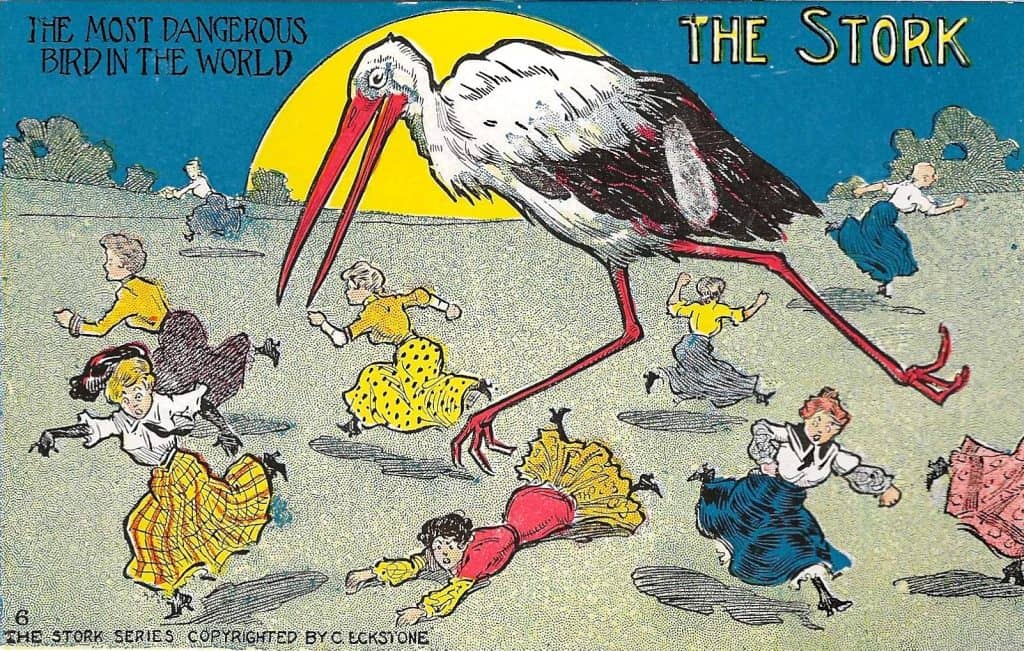
Postcard artists and manufacturers certainly would never dismiss the chance to include storks and babies in their greeting cards. The Stork series, The Most Dangerous Bird in the World that we examine today was published circa 1910 by the Albert Hahn Company, publishers, of New York. The humor is illustrated by C. Eckstone a signed artist, who apparently made his living at working for New York postcard publishers and by drawing caricatures of politicians but managed to otherwise avoid the culture grids of the early 20th century.
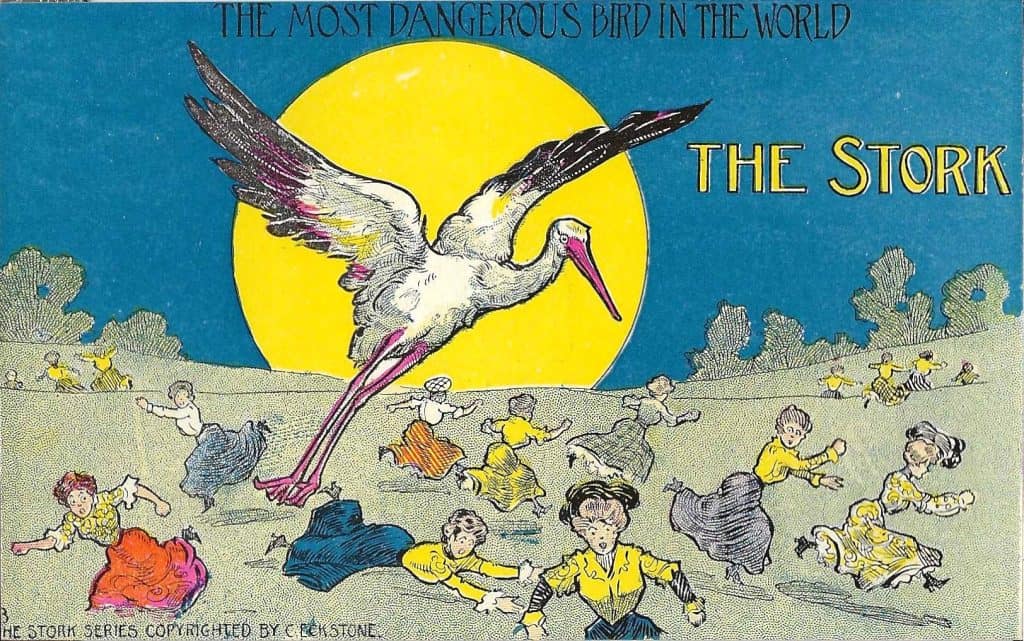
In western cultures where a stork is the central character in a birth, the absurd critter is big and white – white being a symbol of purity – with long legs and a long sharp beak. Storks are often depicted as they fly about looking for appropriate places to deliver a bundle wrapped in a white cloth that it holds in its beak.
The image has become so commonplace that it is seldom questioned when seen on birth announcement cards, wrapping paper, baby clothes, and layette accessories.
When similar legends are examined, they all seem to form around a common idea that the bird is one of the finest examples of long-term parenthood. Unlike many other species, birds and humans by comparison are similar because of the state of helplessness when they arrive in the world. Many other species can fend for themselves without any parental supervision almost immediately — picture sea turtles hatching from their eggs on the sand and then somehow finding their way to the ocean. Another example of an animal that comes into this world with more self-sufficiency than almost any other is a newborn giraffe who can scramble to their feet and walk around on their own within hours of birth.
Human babies, however, are a very different story. For the first two months of life, they can’t lift their heads without help. They usually roll over for the first time at about four months and sit up unassisted after six months. They usually start standing at about nine months and take their first steps near their first birthday.
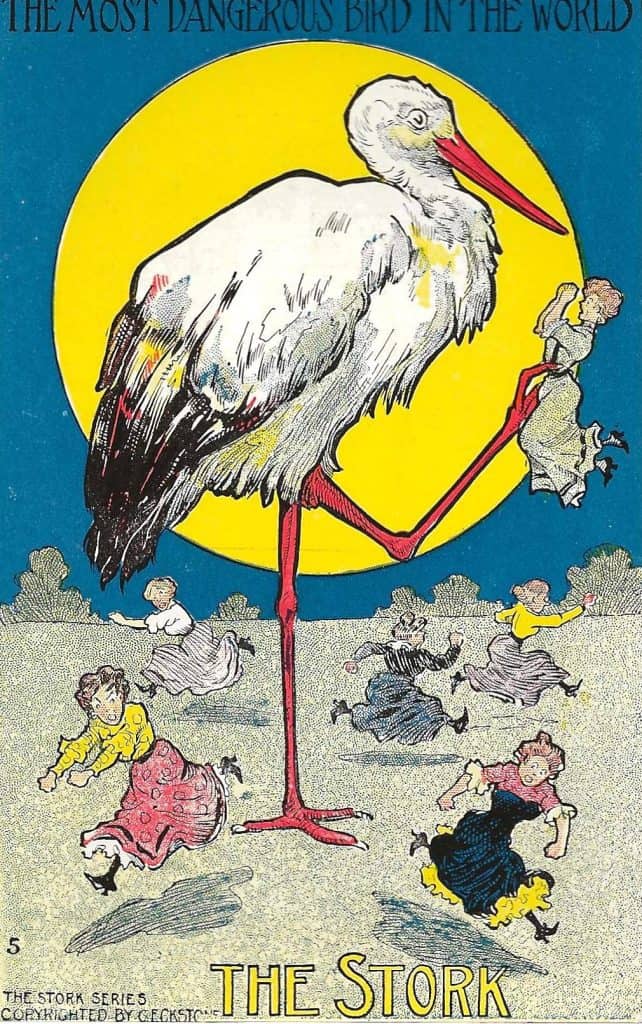
But even then, babies are just getting started. Fine-tuning the most basic survival skills, such as walking and feeding themselves, takes at least another year or more, and the little ones generally remain dependent on parents or caregivers for well over a decade before they’re even able to begin to navigate parts of the world on their own.
And this is expected. The time that humans need to acquire the abilities to live on their own is part of the evolutionary trade-off for having highly developed brains capable of managing complex reasoning, communication, and the physical requirements of our adult bodies which last on the average of sixty to seventy-five years.
Folklore and fable researchers also suggest that ancient Greece is the site where a ruthless goddess named Hera grew envious of the Queen Gerana and turned her into a stork. So, it may be!, but alas, there is a twist – another bit of sleuthing debunks the stork and substitutes a crane. And, again, what can it matter: stork, crane, heron, who’s keeping score?
Could it be that the mythic origins congeal best as it was discovered during the pagan eras, more than 700 years ago in Germany and Norway that storks are biologically destined to a nine-month migration, which seems to commence just after the annual summer solstice – a favorite time for young couples to marry. The parallel continues as the birds return home the following spring to have their chicks at the same time that lots of babies were born. Hence it stands to reason that storks became the heralds of all new life, spawning the fanciful idea that they had delivered the human babies.
But the cards from the Most Dangerous Bird in the World set, in no way resemble the happy-marriage, new baby, and happy times that seem to be wedged into the human dream-psyche.
The art suggests that when the stork appears in the moonlight it is a foretelling that things are about to change. Certainly today and it may well have been the same in 1910 that not all women want to share the idea that children are a lifetime of parental bliss. It could be time to run for the hills or at least find a safe place to hide.
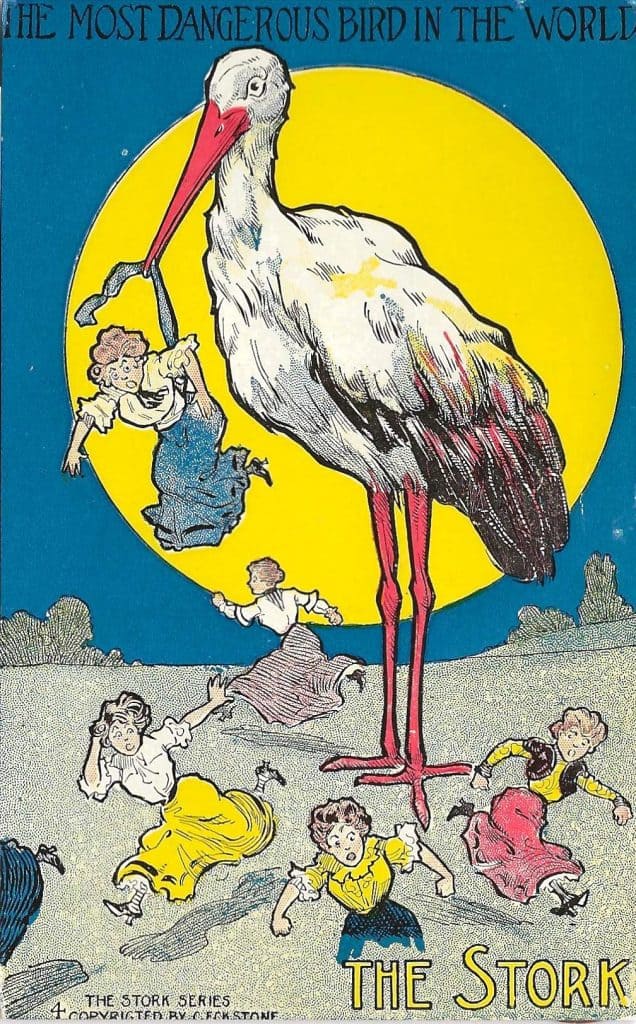

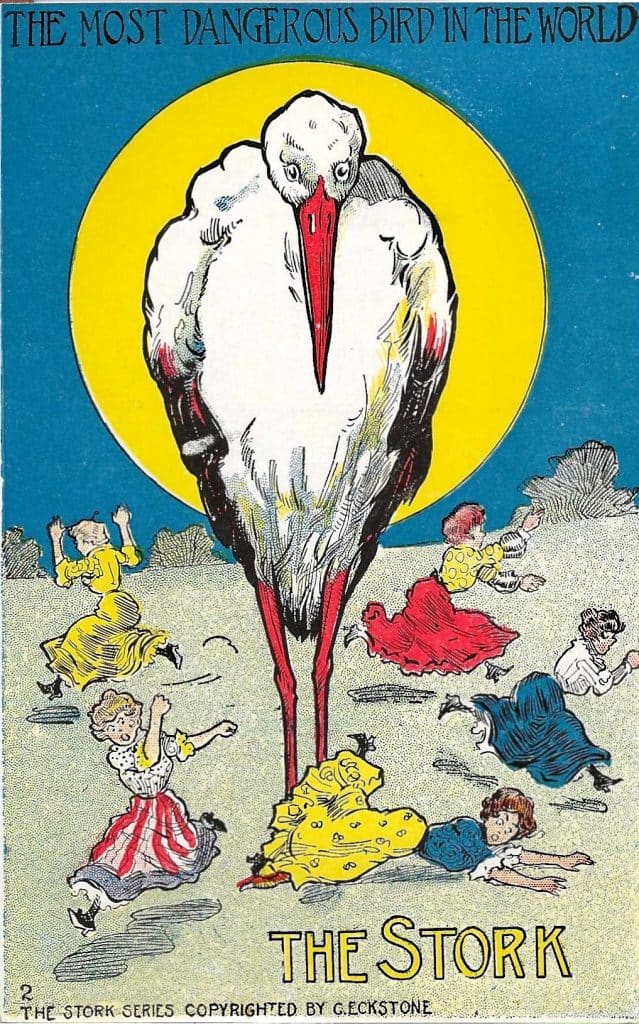
What a great set of cards! Thanks “Ellie” for letting me know how this comes about. I was told something about a watermelon seed. (Not really.) We have 10 kids only 1 went to his everlasting Home. The years before they all fledged are remembered as a fun zoo.
Great information…thank you! The stork brought us 4 kids, now ages 47-54.
My mother told my siblings and me that we came from the cabbage patch. Just where this patch was located was never mentioned.